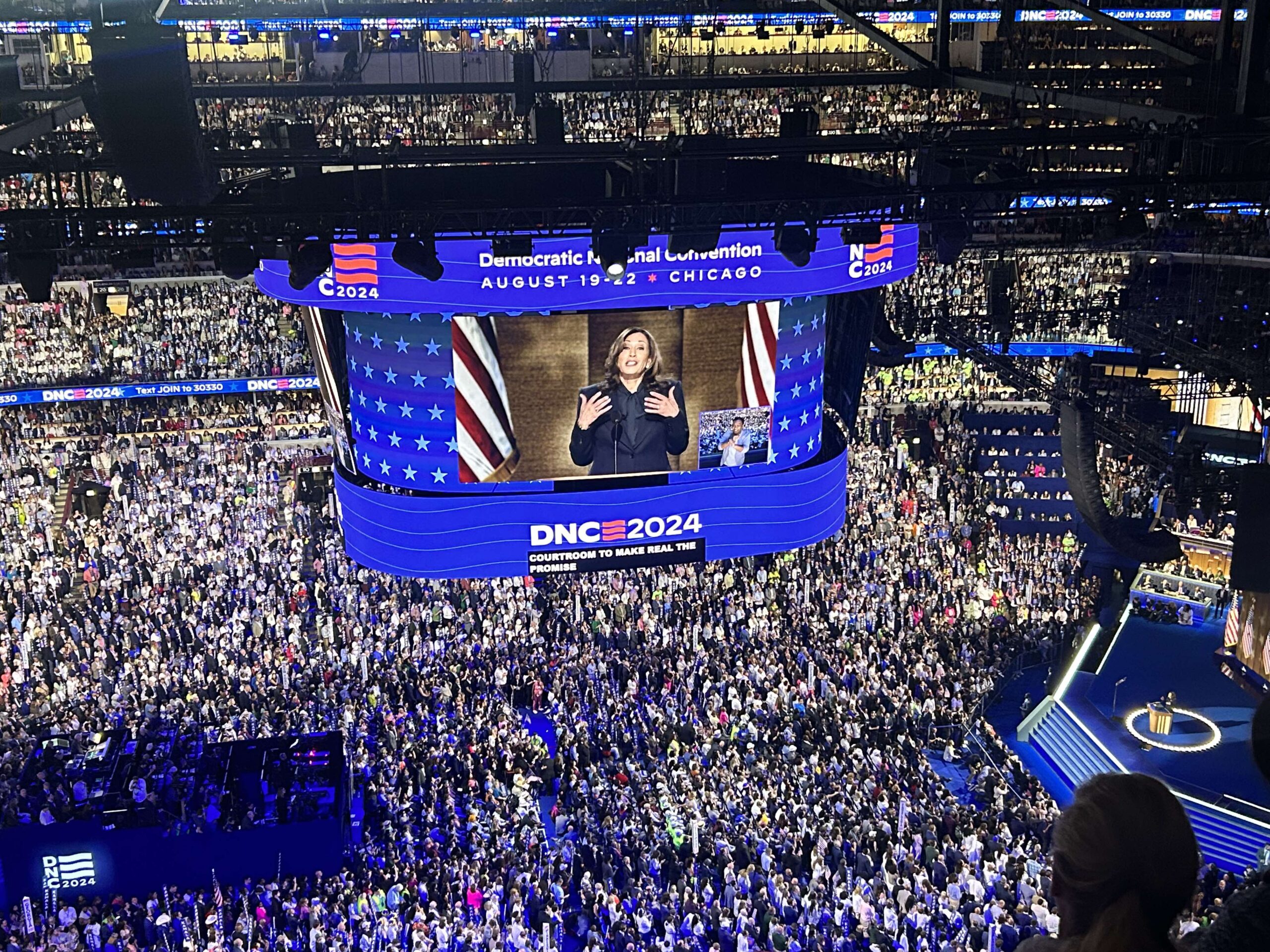The McKell Institute had a front row seat at Kamala Harris’ nomination. Here’s what it was like.
On 19 August, over 100,000 Democrats, journalists, and Democratic party delegates descended upon Chicago for the 2024 Democratic National Convention.
The McKell Institute was fortunate enough to be among a handful of foreign observers at the DNC.
At the invitation of the Progressive Policy Institute, one of the US’ leading think tanks, I traveled to Chicago to witness up close the historic nomination of Kamala Harris. Here are my takeaways:
The energy and enthusiasm in the venue was extraordinary — and surprising
Just one month prior to the DNC, President Biden stepped down amid a wave of anxiety amongst his party.
None of that anxiety was visible in the convention hall. Instead, unbridled optimism, energy and enthusiasm had taken over after the poorly-polling Biden was replaced at the top of the ticket by Kamala Harris. Democrats now feel like they can win. And this became clearer the longer the convention wore on.
A Biden DNC would have had a much more different feel.
Indeed, the first night of the DNC, when Biden gave his valedictory, carried an altogether more serious, more somber tone than the final three days.
Days 2,3 and 4 were energetic, joyous, and fun — there was a genuine party atmosphere that was hard to depict on camera.
The party was united, but there were few policy ideas discussed
The conventions are no longer the forum where candidates outline detailed policy manifestos. Instead, the primary purpose is drive energy among the faithful.
Even so, it was surprising just how little actual policy was discussed.
While technically the convention formalised the Democratic policy platform, it merely rubber stamps it, within the first hour of the first day with no scrutiny or debate.
After four nights, I left the DNC with no real knowledge about what the policy priorities of the Harris administration will be beyond rejecting the worst impulses of the MAGA coalition — a worthy goal, but not necessarily enough to form a four-year governing agenda.
We have seen in recent yeast that small target strategies can work in a campaign. But they can make governing harder, too, and weaken popular mandates for difficult reform once in office.
I’m hopeful the Harris campaign begins to roll out a more substantive agenda ahead of polling day.
Unions were celebrated and remain at the heart of the Democratic party
Each night, trade union leaders made important appearances and were received with boisterous applause.
With some unionists in the US flirting with Trump, it is easy to overlook just how central to the Democratic coalition the union movement is. This was celebrated throughout the convention.
Regular people, not politicians, often stole the show
For all the soaring rhetoric, it was the unexpected appearances that often created drove the most memorable moments.
On the main stage, two moments stood out:
Kamala Harris’ young nieces teaching the audience how to pronounce her name, and the appearance of the football team Tim Walz coached.
It was often the regular people, not the politicians, who captured the room’s focus.
The joy couldn’t entirely mask the frayed edges of US politics
The Democrats are undoubtedly unified, but the country is not. That broader division was visible in Chicago, albeit on a much smaller scale than expected.
Ahead of the DNC, much had been made of the potential for widespread protests.
This didn’t materialise quite as expected.
While there were several hundred protesters criticising the Biden-Harris Administration’s Israel policy, they were peaceful.
In similar numbers were others protesting a whole range of other issues — abortion, disability rights, healthcare.
You didn’t have to look far to recognise that the rosy and optimistic vibe inside the convention is far from universal.
The jury is out whether it will work or not
The big question is whether the DNC will make much of a difference to the race.
One journalist I spoke to at the convention mentioned he hadn’t even bothered to watch the real-world proceedings, instead sitting at the back of a box in the United Center watching proceedings on TV to file his story.
“We’re on a TV set, and we’re the studio audience”, he said, noting the only way to properly report on it and understand how it was being interpreted in the country was to watch the broadcast.
There’s a truth to that: despite the buzz in the room, it is hard to know how much the energy inside the DNC will translate in the real world.
This is a presidential race that will still be won at the margins, and whether the messages honed at the convention will make a meaningful difference to a line-ball race is yet to be determined.
We should be grateful for our more ground-level politics in Australia
After a week at the DNC, I was left impressed by the spectacle.
But I also left grateful that we don’t have the same performative culture in Australian politics.
There’s a lot to learn from the US — but we should be thankful that the scale of our politics at home is smaller; that our elections are more often than not choices over different policy priorities and not just character; and that our political campaigns aren’t designed primarily to generate enthusiasm among the faithful just to drive turnout.
The McKell Institute thanks the Progressive Policy Institute for their gracious hospitality in Chicago.



SOCIAL SHARE